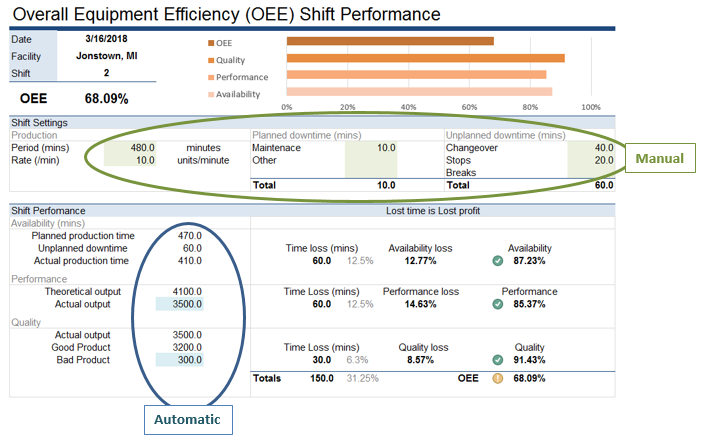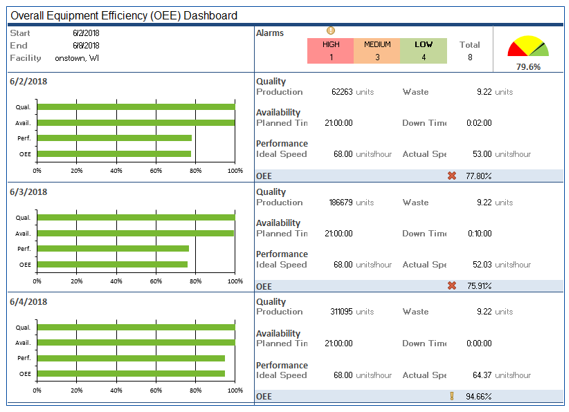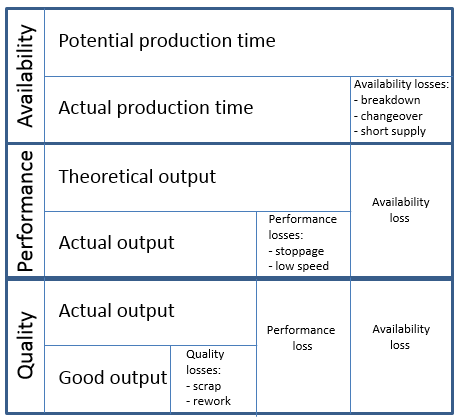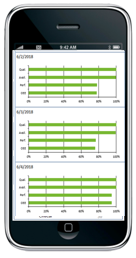Equipment Effectiveness (OEE)
Improve production and quality
See also:
 Video on OEE reports
Video on OEE reports
Article on OEE Reports
Overall Equipment Effectiveness (OEE) was developed in Japan in the 1960s as a way to evaluate how effectively a manufacturing operation is utilized.
It is a core metric used in Total Productive Maintenance (TPM) and is usually used for measuring improvement.
XLReporter combines raw process data e.g., equipment runtimes/rates and manual data e.g., production targets, to present OEE reports and dashboards.
A big mistake most people make is to believe OEE is simply a score. On the contrary, if interpreted correctly it helps production and management to identify equipment losses and waste.
XLReporter combines raw process data e.g., equipment runtimes/rates and manual data e.g., production targets, to present OEE reports and dashboards.
A big mistake most people make is to believe OEE is simply a score. On the contrary, if interpreted correctly it helps production and management to identify equipment losses and waste.
How Is OEE Calculated?
OEE has three main components built around answer to basic process utilization questions:
- Are We Running or Not
This is Availability and measures time loss. Since OEE is used to identify unplanned stoppages, and time for planned stoppage is removed from the calculation - How Fast are we Running.
This is Performance and measures speed loss. - How much product met specification
This is Quality and measures quality loss.

Why XLReporter for OEE
XLReporter templates are designed in Microsoft Excel, an ideal platform for expressing OEE calculations and formulas.
The data for the report is a combination of process data and manual data which are both supported by XLReporter. In fact, for manual data, forms can be designed for the operator to manually
record downtime and other values not readily available in the process.
An additional benefit is XLReporter's automatic distribution capability e.g., web pages, which will keep production and management up-to-date with productions effectiveness.
An additional benefit is XLReporter's automatic distribution capability e.g., web pages, which will keep production and management up-to-date with productions effectiveness.



